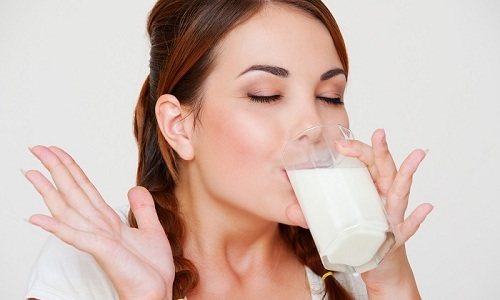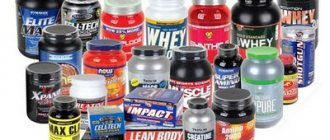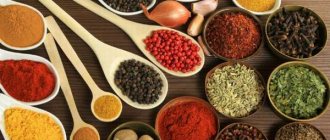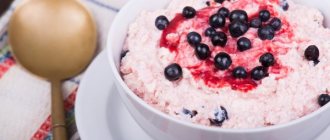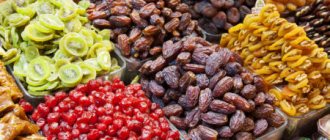Diet for pancreatitis - drink yogurt
Causes of pancreatitis
The cause of inflammation of the pancreas (pancreatitis) is increased secretion of pancreatic juice in combination with a violation of its outflow. With pancreatitis, self-digestion of pancreatic tissue occurs under the influence of its own enzymes.
Pancreatitis can be acute or chronic. Acute pancreatitis can be the result of any infectious disease, poisoning or obstruction of the pancreatic duct due to stones or narrowing of the excretory ducts. Chronic pancreatitis occurs when there is a chronic delay in the secretion of pancreatic juice due to stones, unsystematic irregular nutrition, frequent consumption of fatty and spicy foods, which stimulate the production of pancreatic juice, and so on.
Signs of acute pancreatitis and exacerbation of chronic pancreatitis are severe pain in the upper abdomen, nausea and vomiting. Treatment of such patients is carried out in the surgical department of the hospital. One of the main places in the treatment of patients with chronic pancreatitis is occupied by therapeutic nutrition.
Diet for acute pancreatitis
Acute pancreatitis is a surgical disease, so in the first hours the question of whether the patient requires surgery is usually decided. Most often, if the patient is delivered to the hospital in a timely manner, treatment begins with conservative methods. In this case, all nutrients reach the patient within several days, bypassing the gastrointestinal tract, in the form of nutrient solutions that are administered intravenously. In addition, he often and little by little (if his condition allows, that is, if he does not have uncontrollable vomiting) drinks slightly alkaline mineral water without gas. At the same time, ice is applied to the area of the pancreas in order to minimize its activity. Eating is allowed only after the pain stops.
The first food of a patient with acute pancreatitis is easily digestible and easily digestible fermented milk products, usually yogurt. Take a third of a glass of yogurt every half hour. If the patient tolerates such a diet well, then he should eat up to a liter of yogurt per day. If after this the pain does not return within 24 hours, the patient is allowed to take several tablespoons of low-fat, freshly prepared cottage cheese.
Further expansion of the diet occurs under constant monitoring of the patient’s condition. If the pain returns, the diet becomes more strict; if there is no pain, the diet is expanded to include low-fat protein products - boiled chicken, fish. Meals should be taken in small portions, often, and all foods should be pureed only. All foods that could stimulate the secretion of pancreatic juice are completely excluded - these are fatty, fried, smoked and spicy foods. Eating sweet and rich foods is also not allowed - they contribute to the release of large amounts of gases in the intestines, and a swollen intestine can put pressure on the pancreas and cause an exacerbation of the inflammatory process.
Diet for chronic pancreatitis
If an exacerbation of the chronic inflammatory process in the pancreas occurs, it is treated in the same way as acute pancreatitis. Dietary nutrition is also no different.
As the condition improves, the food is gradually subjected to less and less harsh culinary processing. But fatty, fried, spicy and smoked foods are still not allowed. Meals are fractional, in small portions. Preference is given to dairy products: fermented milk drinks, cottage cheese, low-fat cheeses. Low-fat varieties of fish and meat, boiled or steamed, are also allowed.
Outside of an exacerbation, patients with chronic pancreatitis are allowed a more varied diet. You can eat dried white bread, various cereals, vegetable puree, steamed meat and fish cutlets, boiled meat and fish (but not broth!), vegetable soups with the addition of cereals (not too concentrated), tea with a small amount of sugar. Porridge (preferably buckwheat or rice) is prepared in water and only then diluted with milk. Oil is added to porridges and purees after the dish is ready and in small quantities (no more than a tablespoon per day). You can eat fresh fruits and berries in small portions. In order to regulate bowel movements, patients with chronic pancreatitis should drink a glass of yogurt at night.
Patients with chronic pancreatitis should never drink alcohol, sweet carbonated drinks, coffee, cocoa, fresh bread (it should be slightly dried), anything sweet (cakes, ice cream, chocolates, etc.) and fatty foods.
source
Rules of use
If the gland is inflamed in the acute stage, doctors recommend avoiding fermented milk products. Why? The fact is that at this moment the patient’s acidity, directly from the gastric juice, increases. If you drink kefir during the acute stage of pancreatitis, there will be a failure in the production of pancreatic enzymes, thereby worsening the patient’s general condition.
Kefir for pancreatitis is not always beneficial for a person, especially given the nature of the exacerbation.
Some doctors may allow you to drink kefir during an exacerbation of the disease, it all depends on the general condition of the patient. As soon as the attack of pain stops, you are allowed to drink a small amount of the drink. The dosage should not exceed more than 50 ml per day.
If the patient does not experience pain and the condition does not worsen, then the dosage of drinking the drink is gradually increased by 10-15 ml, thus reaching 1 glass per day.
Recommendations from Elena Malysheva in the special issue “Live Healthy!” on how to overcome pacreatitis using the healing effects of natural remedies.
For chronic pancreatitis, start drinking a 1% fermented milk drink. Recommended dosage: 1/4 cup once a day. If the condition does not worsen within two days, then you can gradually increase the dosage to 1-2 glasses per day.
When the gland is inflamed, you should drink the drink only at room temperature. If you drink cold kefir, there is a risk of spasm in the pancreatic ducts.
Also read: Beetroot for pancreatitis of the pancreas
Standard rules for increasing dosage:
- Drink 50 ml.
- After a couple of days, increase the dosage to 150 ml, and divide the dose into 3 doses.
- In case of stable remission, the dosage can be up to 2 glasses per day.
If the condition worsens at the first step, then you need to stop taking it and consult a doctor.
Many patients ask whether it is possible to drink a drink before bed? Doctors disagreed, so there is no exact answer to this question. This product is rich in carbohydrate compounds, dietary fiber and protein, so it quickly stimulates intestinal motility, satisfies hunger and restores microflora and gland function.
If in the evening after taking it there is no discomfort, then the drink can be drunk, but only in small quantities.
Curdled milk for acute pancreatitis and exacerbation of chronic
Due to the higher content of lactic acid compared to kefir, yogurt is not recommended to be included in the menu earlier than 3 weeks after an exacerbation. At the same time, you can only consume fresh, daily yogurt, since over time the amount of lactic acid in it increases, the number of beneficial bacteria decreases and there is a possibility of foreign microflora entering it, which can be dangerous.
In addition, when treating an exacerbation of pancreatitis in a hospital setting, you will not be allowed to use homemade yogurt; you will only be able to use an industrially produced product without flavoring additives or sugar.
How to choose?
When choosing kefir for pancreatitis, you should give preference to products with a minimum shelf life and low fat content.
The drink with the prefix “bio” in the name has the best healing properties.
Biokefir contains beneficial probiotic bacteria (bacillus acidophilus, lacto- and bifidobacteria), which inhibit the growth of pathogenic microflora.
The prebiotics contained in kefir, or carbohydrate compounds (lactulose, dietary fiber, inulin), are able to pass from the stomach unchanged into the intestines, where they exert their healing effects.

Patients with pancreatitis should consume kefir:
- homogeneous consistency;
- fat content not higher than 1%;
- fresh, but no more than 1-3 days ago;
The most popular brands: “BioMax”, “Vkusnoteevo”, “House in the Village”, “36 kopecks”.
Curdled milk during remission of chronic pancreatitis
After the exacerbation of yogurt subsides, yogurt, along with other fermented milk products, can and should be present in the daily diet of patients with pancreatitis. You should still use only fresh, daily product in your diet, and if you buy industrially produced yogurt, keep an eye on the release date and the absence of extraneous additives (thickeners, flavorings, preservatives, fruit and berry fillers, etc.).
At home, you should prepare yogurt only from pasteurized or sterilized milk; under no circumstances use unboiled farm milk - it may contain pathogens of intestinal infections.
Use yogurt separately, as an independent dish in the evening before bed, or as an afternoon snack, adding fruit and berry puree, vegetable or fruit juice, a teaspoon of jam, and honey. If remission is stable, you can sweeten the product with regular sugar.
Dietary Compliance Score for Chronic Pancreatitis: 10.0
Rating of product suitability for nutrition during acute pancreatitis: -2.0
C, B1, B2, B5, B6, B9, A, B4, B12, E, H, PP
molybdenum, fluorine, cobalt, potassium, manganese, copper, magnesium, phosphorus, iron, calcium, selenium, iodine, zinc, sulfur, sodium, chlorine, chromium
Pediatrician and pediatric endocrinologist. Education: Faculty of Pediatrics, SSMU. I have been working since 2000, and since 2011 as a local pediatrician in a children's clinic. In 2020, I completed my specialization and received a certificate in pediatric endocrinology, and since the beginning of 2020 I have been additionally receiving appointments as…
Composition and calorie content of the drink
Curdled milk is obtained by fermenting milk based on pure cultures of lactic acid bacteria. Almost 90% of the drink consists of water. One hundred grams of the product also contains:
- 4.1 grams carbohydrates;
- 3.2 grams fat;
- 2.9 grams of protein;
- 0.7 grams of ash.
The main protein in curdled milk is casein. The synthesis of this protein occurs slowly, which ensures a long, gradual supply of amino acids into the blood, which is especially important for athletes.
The drink is enriched with useful vitamins, minerals and biologically active substances:
- vitamins A, B, C, H, PP;
- calcium, potassium, fluorine, zinc, iron, phosphorus, selenium, manganese, magnesium.
Curdled milk is enriched with fatty acids (mainly myristic, oleic, palmitic, stearic), amino acids, and lactic acid (lactate). It also contains enzymes that improve digestive and metabolic processes.
The calorie content of a product depends on the degree of fat content. The calorie content of 100 ml of yogurt with 2.5% fat is 53 kcal, for a drink with 3% fat - 60 kcal.
The drink contains many useful substances. However, above all, it is valued for its content of beneficial lactic acid bacteria, enzymes, calcium and phosphorus. It should be noted that yogurt contains calcium in the most easily digestible form. In addition, the drink contains phosphorus, which is necessary for good calcium absorption.
Useful properties of the product
First of all, curdled milk is very beneficial for the digestive system. Drink:
- Populates the intestines with beneficial bacteria, thereby inhibiting the vital activity of pathogenic microorganisms and restoring the balance of beneficial microflora.
- Improves the functioning of the intestine, activates its peristalsis.
- Cleanses the body of waste and toxins.
- Improves metabolism.
- Reduces cholesterol levels.
- Helps get rid of dysbiosis and improve the condition of the liver after taking medications.
- Improves appetite, stimulates the activity of gastric juice, digestive enzymes, and bile.
In addition to its beneficial effects on the digestive tract, yogurt:
- Replenishes the body's reserves of easily digestible calcium, which contributes to the strengthening and normal development of bone tissue.
- Cleanses blood vessels from toxins and waste, promotes the resorption of cholesterol plaques.
- Improves heart function, strengthens the heart muscle and vascular walls.
- Normalizes blood pressure.
- Facilitates the removal of mucus from the respiratory tract.
- Strengthens the immune system, helps to quickly restore the body after infections, bacterial and viral diseases.
- Normalizes water-salt balance.
- Improves skin condition, strengthens hair and nails.
It activates digestive and metabolic processes and at the same time contains a small amount of calories. Thanks to these features, this product helps get rid of cellulite and lose weight.
In view of this beneficial effect on the body, microbiologist Mechnikov recommended drinking a glass of yogurt every day.
Kefir for exacerbation of pancreatitis
During the acute phase of the disease, kefir can be included in the patient’s menu only from the 10th day, counting from the moment the exacerbation begins. You are allowed to consume only a low-fat fresh drink in an amount of no more than a quarter glass. If the patient’s condition improves in the following days and normal tolerability of the product is observed, then the volume of kefir per day is gradually increased to 200 ml, while the total amount per day increases by 15 ml.
Doctors recommend drinking kefir at night about an hour before going to bed. In this case, the drink is a kind of light dinner that does not create unnecessary stress on the digestive system and the inflamed pancreas.
An important point is that the calcium that enters the body when consuming kefir is best absorbed at night.
Who is prohibited from drinking sour milk?

The use of yogurt is contraindicated for:
- Personal intolerance.
- Acute course of diseases of the digestive tract (ulcers, pancreatitis, gastritis, cholecystitis, etc.).
- Increased acidity of gastric juice
- Ulcer.
- Gastritis due to increased acidity of gastric juice.
- Erosive gastritis.
- Hepatitis.
- Severe, prolonged diarrhea.
Unlike milk, yogurt can be drunk by people with a slight degree of lactase deficiency. This disease disrupts the synthesis of lactose, a disaccharide found in dairy products. The lactic acid bacteria contained in yogurt facilitate the processing of lactose. However, if there is significant lactase deficiency, this product should be excluded from the diet.
It is not recommended to give yogurt to children under 1.5 years of age. In young children, the enzyme system is still weak, so such a product can create a significant burden on the pancreas, cause digestive disorders, and abdominal pain.
Possible harm and side effects

Only fresh yogurt has beneficial properties. In a fermented drink, the level of lactic acids and alcohol increases significantly. Therefore, its use will lead to gastrointestinal disorders, which are accompanied by:
- colic;
- painful sensations;
- flatulence;
- bloating;
- increased gas formation;
- stool disorder.
If you drink yogurt that has stood for more than three days, you can be seriously poisoned.
In case of intolerance to fermented milk products, taking yogurt can lead to the development of allergic reactions (rashes, redness, itching, burning of the skin, difficulty breathing), as well as digestive disorders. An allergy to this product may be caused by lactose or milk protein intolerance. In the latter case, the signs of the disease resemble those of a cold.
Curdled milk is often included in the diet menu for weight loss. However, it should be borne in mind that this drink should not become the only product for consumption. Although it contains vitamins, minerals, fats, carbohydrates and proteins, they are not enough to maintain the normal functioning of the body.
How to use?
For inflammation of the pancreas, it is recommended to consume:
- no more than 200 ml of kefir per day;
- low-fat drink or with no more than 1% fat content;
- product of daily “maturity”.
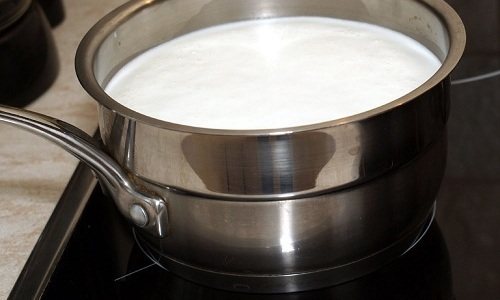
Kefir prepared at home is useful. However, for pancreatitis, it is recommended to first reduce the fat content of homemade milk. To do this, boil the drink over low heat for an hour, after which the foam formed on the surface is removed. After the milk has cooled, starters are introduced into it in the form of a liquid or a special powder and left in a warm place. After 12-24 hours, the healthy and low-calorie product is ready.
Kefir for the night
The most favorable time for drinking kefir is shortly before bedtime (1 hour).
An evening drink for pancreatitis can replace a light dinner, which is important for the diet prescribed in case of exacerbation of the disease.
This approach will relieve the feeling of hunger, but will not burden the digestive system during sleep. In addition, consuming kefir at night improves intestinal function and increases calcium absorption.
Kefir with cottage cheese for pancreatitis
Along with traditional fermented milk products, low-fat cottage cheese can be a source of vitamins, microelements and complete, quickly digestible proteins.
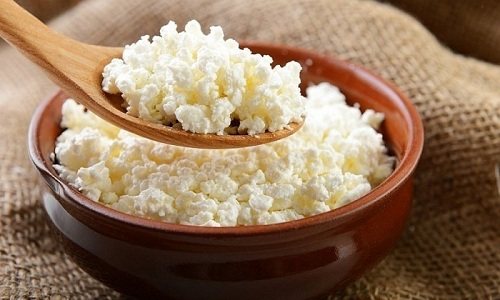
This is an easily digestible product that has a general strengthening and healing effect on the human body suffering from pancreatitis.
Cottage cheese with kefir:
- helps remove cholesterol from the body;
- inhibits the development of the inflammatory process;
- reduces the risk of complications due to pancreatitis;
- improves the functioning of the pancreas.
When consumed simultaneously with kefir, cottage cheese is allowed to be included in the menu no more than 3 times a week. At the same time, the weight of a portion should not exceed 300 g, and the composition should not contain coconut and palm oils.
To check the quality of the product, just leave the plate with cottage cheese for several hours at room temperature. The natural product will retain its color and begin to sour. If the cottage cheese is covered with a yellow crust, there is a high probability that refractory vegetable fats were used in its production.
Feasibility of use against the background of inflammatory diseases

Although yogurt is very useful for digestion, its use is not always advisable in conditions of gastrointestinal diseases. Whether it is possible to drink yogurt with pancreatitis and cholecystitis depends on the form of the disease, the severity of its course, and the individual characteristics of the body.
For pancreatitis
Curdled milk is prohibited for use in acute pancreatitis. This ban is explained by the following factors:
| Factor | Negative manifestations |
| Increased acidity levels | Acids activate the production of digestive enzymes. With pancreatitis, their passage into the intestines is impaired, they remain in the pancreas, are activated in it and injure the tissues of the organ. |
| Contains fats | When the pancreas becomes inflamed, the production of lipase, which is responsible for the processing of these substances, is disrupted. For this reason, consuming fats during pancreatitis leads to gastrointestinal disorders, which can be manifested by such unpleasant symptoms as nausea, vomiting, flatulence, bloating, abnormal bowel movements, heaviness in the abdomen, and colic. |
| Capable of breaking stool | Drinking the drink during acute pancreatitis can cause severe diarrhea, as a result of which the water-salt and electrolyte balance is disrupted. Such processes have very negative consequences for the body. |
| May be poorly absorbed | Due to impaired passage of enzymes from the pancreas to the intestines, a patient with an acute attack of pancreatitis may experience symptoms of lactose intolerance when consuming yogurt. |
You can introduce yogurt into the diet no earlier than a month after the acute attack of pancreatitis has stopped, provided that the treatment dynamics are positive and the body’s normal tolerance of dairy products.
Buckwheat with kefir in the morning on an empty stomach
For pancreatitis, doctors strongly recommend cooking buckwheat with kefir. The dish helps restore the functioning of the gland, as well as normalize the general condition of the patient.
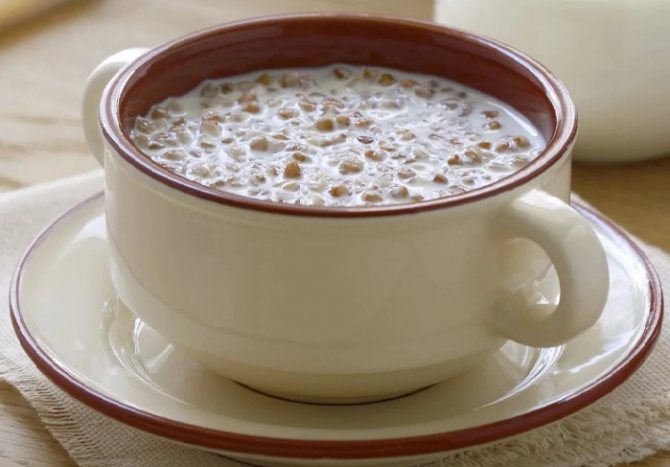
Buckwheat with kefir is one of the popular folk recipes for restoring, or “cleansing” the pancreas.
In chronic cases of the disease and in remission, it is necessary to take the dish for 10-14 days; if necessary, the course is extended, but at the same time you need to take a short break.
Cooking rules
You will need:
- 1/2 cup buckwheat,
- and also about 250 ml of kefir, it is better to buy a low-fat product.
Before pouring the fermented milk product, the buckwheat should be rinsed well under running warm water. Place in a deep plate and pour in the drink.
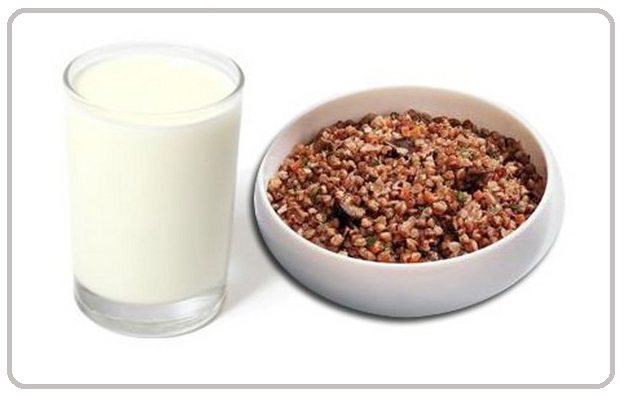
Kefir and buckwheat for pancreatitis is a simple and affordable recipe for a dish with cereal, which is approved for use by doctors when diagnosing problems with the gastrointestinal tract and pancreas.
Infuse the porridge in a cool place for 10 hours (put in the refrigerator). Then, take out the dish and leave for an additional 1 hour at room temperature with the lid closed. For quick infusion, you can put buckwheat in a water bath.
Important! Since buckwheat can cause severe irritation to the gastrointestinal tract, it is necessary to prepare small portions first.
Now you know that kefir for pancreatitis is not only possible, but also necessary to be consumed. The most important thing is to know during what course of the disease you should drink, and in what dosage. Remember, if discomfort, heaviness in the stomach or pain occurs after consumption, you must refuse the drink and choose another healthy option.
Also read: Menu for pancreatitis for a week
For pancreatitis, the diet is quite extensive, so every patient can find a suitable dish and drink for themselves.
Rules and features of introducing a drink to the menu

In order for yogurt to benefit the body, you must adhere to some rules:
- Start drinking the drink no earlier than a month after the acute inflammatory process has stopped.
- The initial amount of drink should not exceed 20 ml. Gradually, the volume is increased to 150-200 ml per day, provided that it is normally tolerated by the body and there are no adverse reactions.
- It is recommended to divide the daily drinking volume into three to four doses.
- Use only warm.
- The fat content of the drink should not exceed 2%; if it is higher, it must be diluted with water.
- Use only fresh yogurt - one or two days old.
- If symptoms of gastrointestinal disorders or exacerbation of pancreatitis occur, the use of the drink should be stopped, and next time try no earlier than a month later.
How to choose
In order for kefir to be beneficial for pancreatitis and not harmful, you need to be able to choose it wisely. It is necessary to familiarize yourself with the composition of the product. It must be made from either whole or pasteurized milk. There should not be any normalized or reconstituted milk in the composition. Milk mushrooms must be specified as a starter. There absolutely cannot be any oils, especially palm oil, in kefir. It should be thick in consistency, homogeneous in structure, without lumps.
Kefir for pancreatitis can be a salvation for patients during remission or another exacerbation of the disease. A thick fermented milk drink, rich in probiotic bacteria beneficial to the human body, has a beneficial effect on the functioning of the gastrointestinal tract (GIT), prevents the activity of pathogenic flora, and has an immunostimulating and calming effect.
